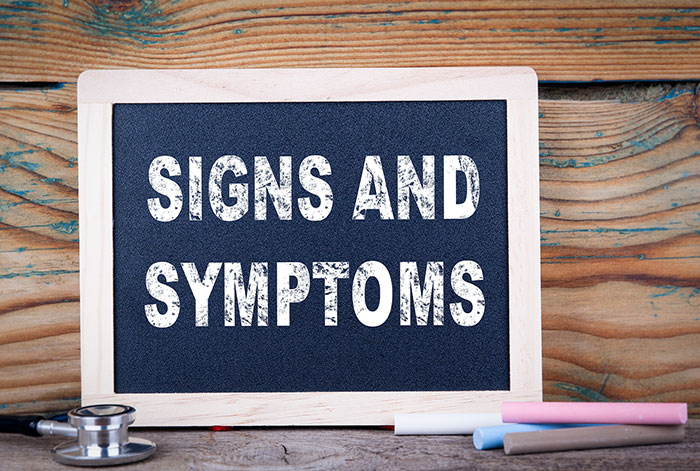Diabetes San Diego - Dr. Jason Shumard, D.C.
In the last 20 years, the number of adults diagnosed with diabetes has more than tripled as the US population has aged and become more overweight. Now, more than 30 million Americans have diabetes, and of those, 7.1 million are undiagnosed. To add to these alarming statistics are the estimated 33.9% of US adults who had prediabetes in 2015, a condition not quite as serious as diabetes but fraught with its own risks for heart disease, metabolic syndrome, mild cognitive impairment, and neurological complications.
So, what are the symptoms associated with diabetes? Look for the following, and if you are experiencing any of these, head to your doctor for a blood sugar test.

Symptoms-General
- Urinate (pee) a lot, often at night
- Are very thirsty
- Lose weight without trying
- Are very hungry
- Have blurry vision
- Have numb or tingling hands or feet
- Feel very tired
- Have very dry skin
- Have sores that heal slowly
- Have more infections than usual
Type 1 Diabetes Symptoms
These may occur in addition to those listed above.
- Nausea
- Vomiting
- Stomach pains
Type 2 Diabetes Symptoms
These generally develop over a longer period of time and, while weight or body fatness is usually an issue in the etiology of this syndrome, other factors such as poor diet and sedentary lifestyle cannot be ruled out.
Gestational Diabetes (diabetes during pregnancy)
Symptoms (if any) usually show up in the middle of the pregnancy, and typically no symptoms are present. If you’re pregnant, you should be tested for gestational diabetes between 24 and 28 weeks of your pregnancy so that you can begin lifestyle modifications to support the health of you and your baby.
Symptoms Caused by Diabetic Complications
Diabetic complications fall into two categories: short-term and long-term.
This is why it can be so difficult for people to see a reason to change--because the complications may be long-term, and it doesn’t seem like it will happen to them.
But diabetes is a progressive disorder, and if it’s not controlled, it will march on to burden you with unseen consequences such as those listed here:
Short-term Complications:
- Slurred speech
- Rapid heartbeat
- Sweating
- Anxiety
- Confusion
- Headaches
- Sleepiness
- Numbness or tingling in hands or feet
- Pale skin
Treatment may include the following:
- Glucose tablets
- Gel tube
- 4 ounces (1/2 cups) of juice or regular soda (not diet)
- 1 tablespoon of sugar, honey, or corn syrup
- 8 ounces of nonfat or 1% milk
- Hard candies, jelly beans, or gumdrops—see the food label for how many to consume.
The American Diabetes Association recommends the 15-15 rule: have 15 grams of carbohydrates to raise your blood glucose and check it after 15 minutes. If it’s still below 70 mg/dL, have another serving of carbohydrates.
Keeping a glucagon emergency kit on hand may also be part of the treatment protocol, particularly if a patient is being treated with insulin. Nasal glucagon is now available.
Hyperosmolar Hyperglycemic Nonketotic Syndrome
In this situation, the blood sugar goes very high, and it is difficult to keep fluids down. While rare, it does occur and targets primarily the elderly or those who may be very ill. It is a life-threatening emergency that, although less common than its counterpart, diabetic ketoacidosis (DKA), has a much higher mortality rate, reaching up to 5-10%. Symptoms include signs of dehydration, weakness, leg cramps, vision problems, and an altered level of consciousness. The onset is typically over days to weeks. Complications may include seizures, muscle aches, arterial blockages, and the formation of clots.
Diabetic Ketoacidosis
Simply put, this is an overproduction of ketones and can happen when your blood sugar is too high or too low. This situation can be quite serious and treatment depends on cause. Ketones occurring from increased fat breakdown for energy can occur in:
-Reduced production of insulin from the pancreas, as in the case of type 1 diabetes
- Illness such as pneumonia or urinary tract infection
- Severe dehydration
- Inadequate insulin therapy
- Physical or emotional trauma
- Heart attack
- Drug or alcohol abuse
- Certain medications, for example, corticosteroids and some diuretics used in the treatment of high blood pressure
Rarely, people with type 2 diabetes may also develop diabetic ketoacidosis.
Long-Term Complications
Long-term complications target both the microvascular and the macrovascular systems. Microvascular refers to the eyes, kidneys, and nerves while macrovascular targets damage caused to the arteries, plaque buildup, and atherosclerosis.
Prevention Strategy

Prevention of long-term complications involves lifestyle changes targeted at diet, exercise, medication, keeping health care appointments, checking blood sugar regularly, and keeping your blood pressure below 130/80 while controlling blood lipids and not smoking. However, this advice is general, and while good advice in theory, it doesn’t take into account your unique situation. It’s important that you partner with a functional medicine practitioner who can look at your individual risk factors and create a treatment plan with your specific needs in mind.
Looking for info about Diabetes in San Diego? Come to Integrative Wellness Center of San Diego!